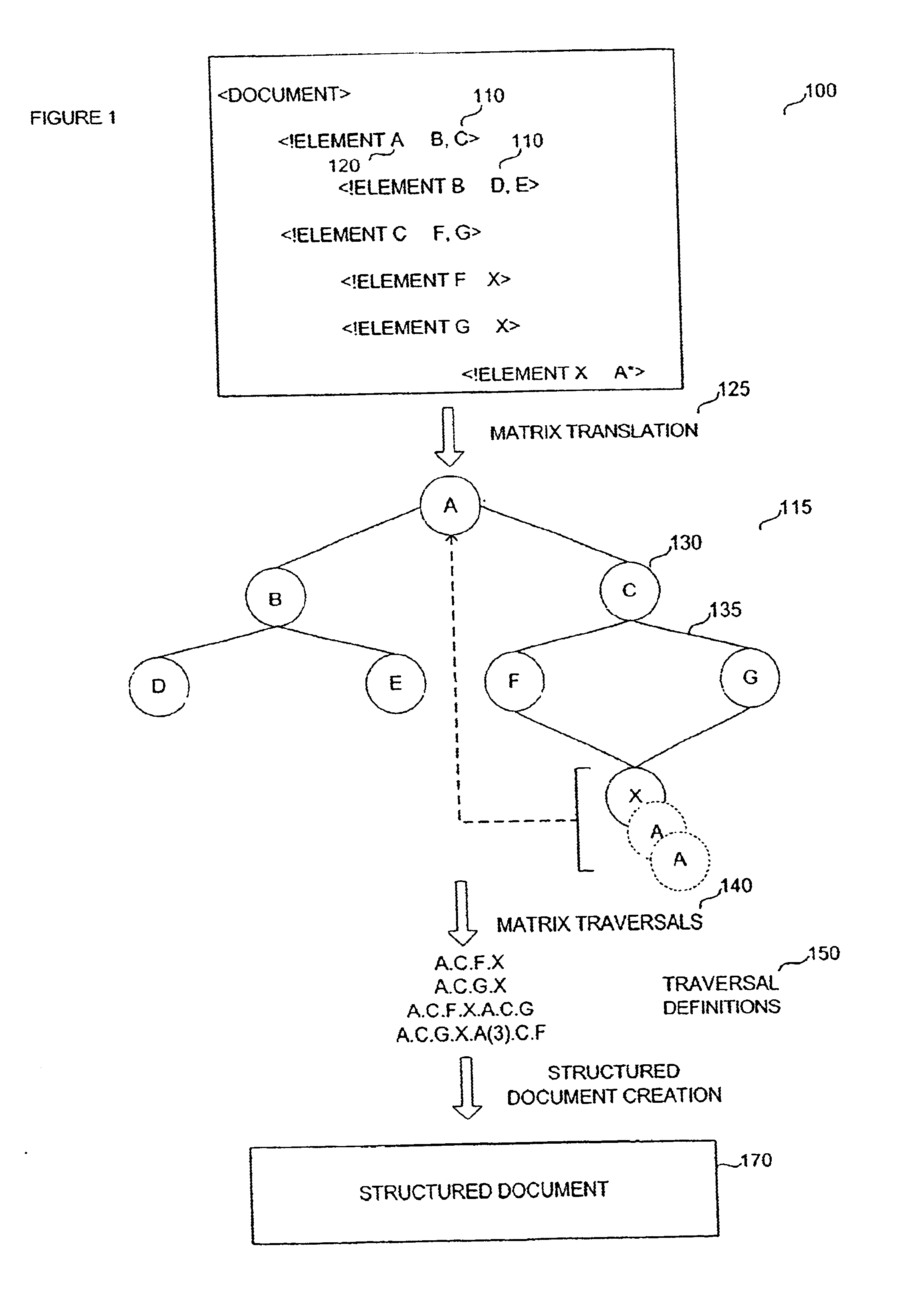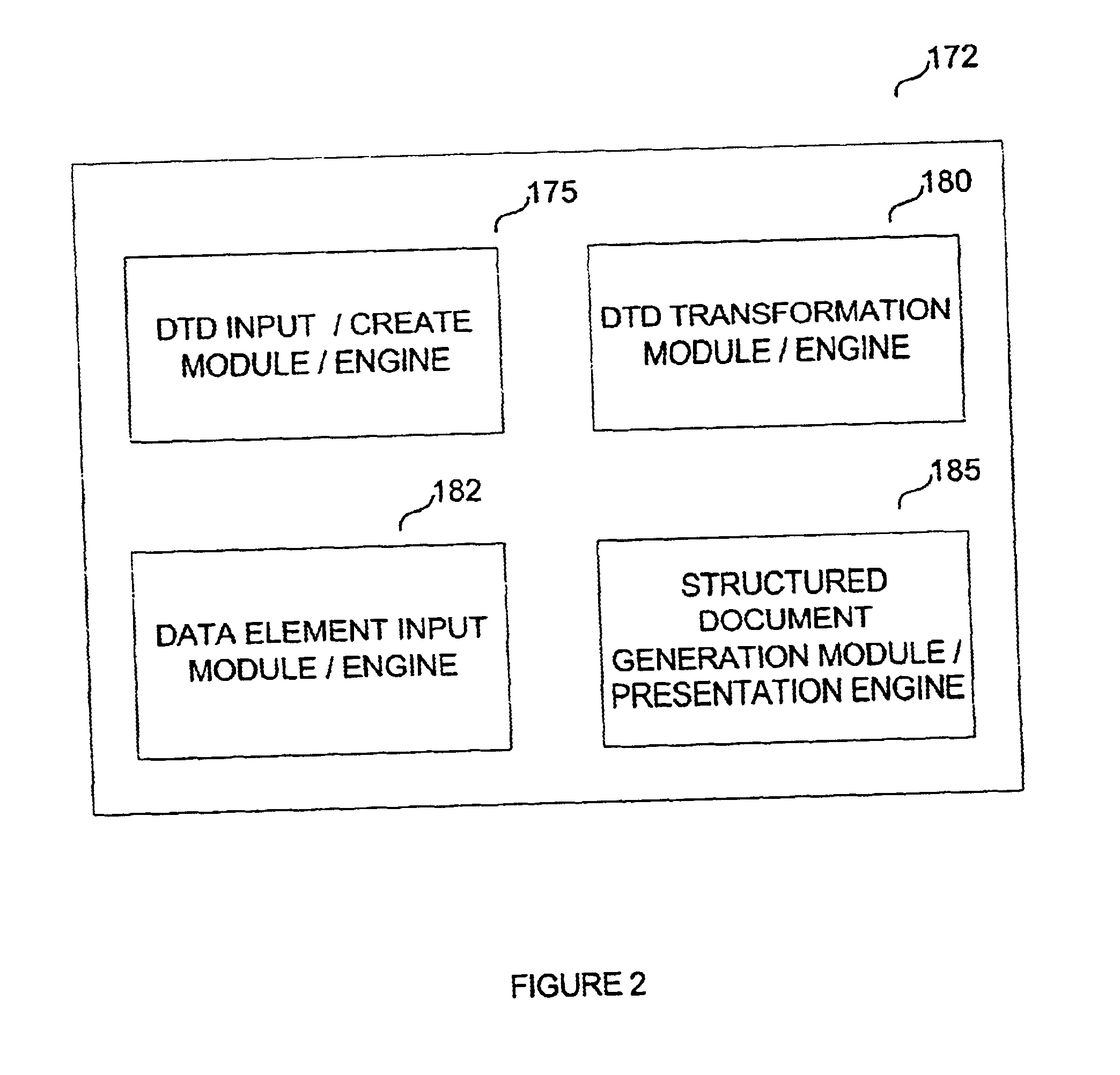System and method for dynamic generation of structured documents
a structured document and dynamic generation technology, applied in the field of data representation, can solve the problems of limiting flexibility in the definition of dtds, limiting the data schema based on constraints, and complex and time-consuming task of type-validating the contents of an xml document, so as to reduce the complexity of type-validated dtds and associated stylesheets, and reduce the requirement for database table configuration
- Summary
- Abstract
- Description
- Claims
- Application Information
AI Technical Summary
Benefits of technology
Problems solved by technology
Method used
Image
Examples
Embodiment Construction
[0037]FIG. 1 illustrates an exemplary Document Type Definition (DTD) 100 comprising a plurality of data relationships between data elements 110 and an associated data schema depicting the relationships using a data matrix or matrix representation 115. The DTD 100 identifies, organizes, and associates the one or more data elements 110 in a meaningful manner. The format of the DTD 100 may follow standard conventions for element identification, such as the use of tags and / or identifying characters that define each element and its relationships. In the illustrated embodiment the element identification scheme follows conventional style guidelines set forth in basic the XML specification. It will be appreciated however, that other element identification schemes and style guidelines can be adapted to operate with the matrix mapping system such as those from any conventional programming technique. Style guidelines may additionally be formed that do not formally adhere to any conventionally ...
PUM
 Login to View More
Login to View More Abstract
Description
Claims
Application Information
 Login to View More
Login to View More - R&D
- Intellectual Property
- Life Sciences
- Materials
- Tech Scout
- Unparalleled Data Quality
- Higher Quality Content
- 60% Fewer Hallucinations
Browse by: Latest US Patents, China's latest patents, Technical Efficacy Thesaurus, Application Domain, Technology Topic, Popular Technical Reports.
© 2025 PatSnap. All rights reserved.Legal|Privacy policy|Modern Slavery Act Transparency Statement|Sitemap|About US| Contact US: help@patsnap.com



